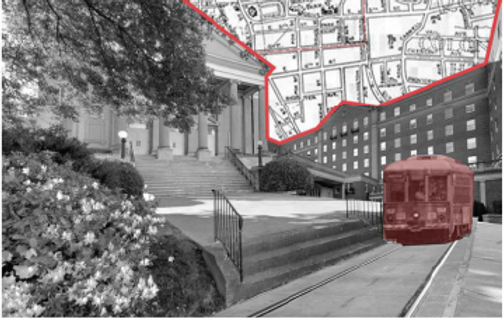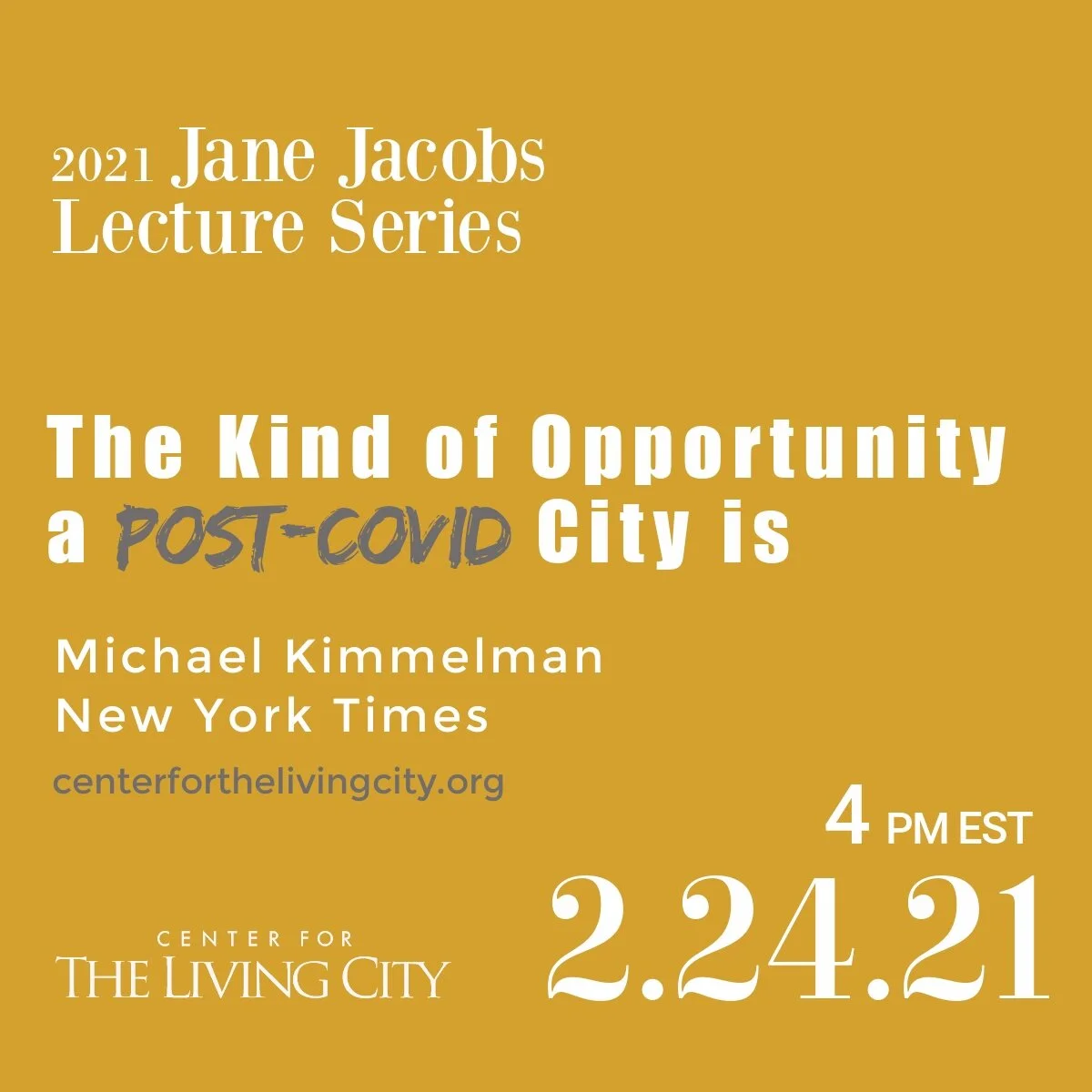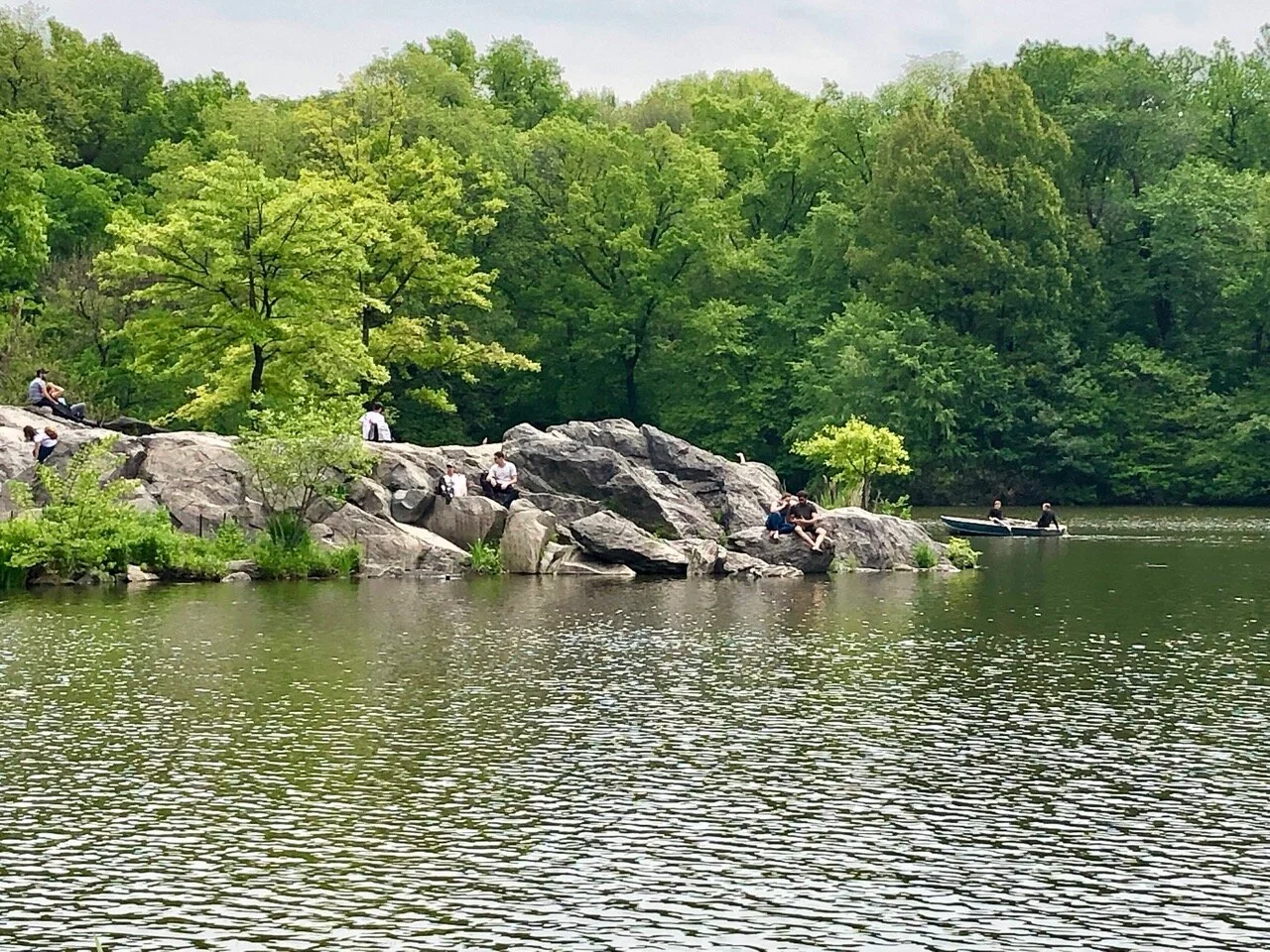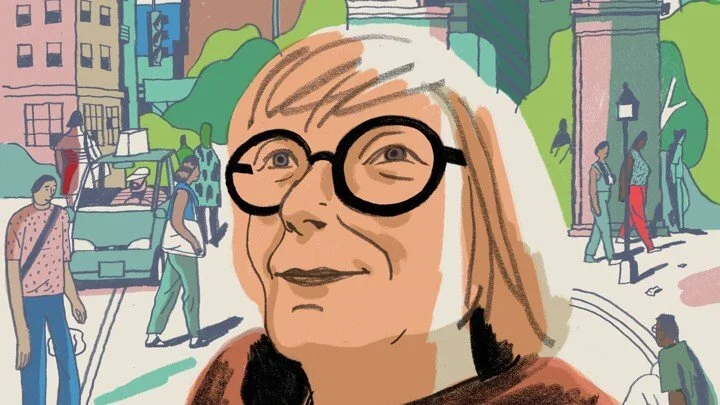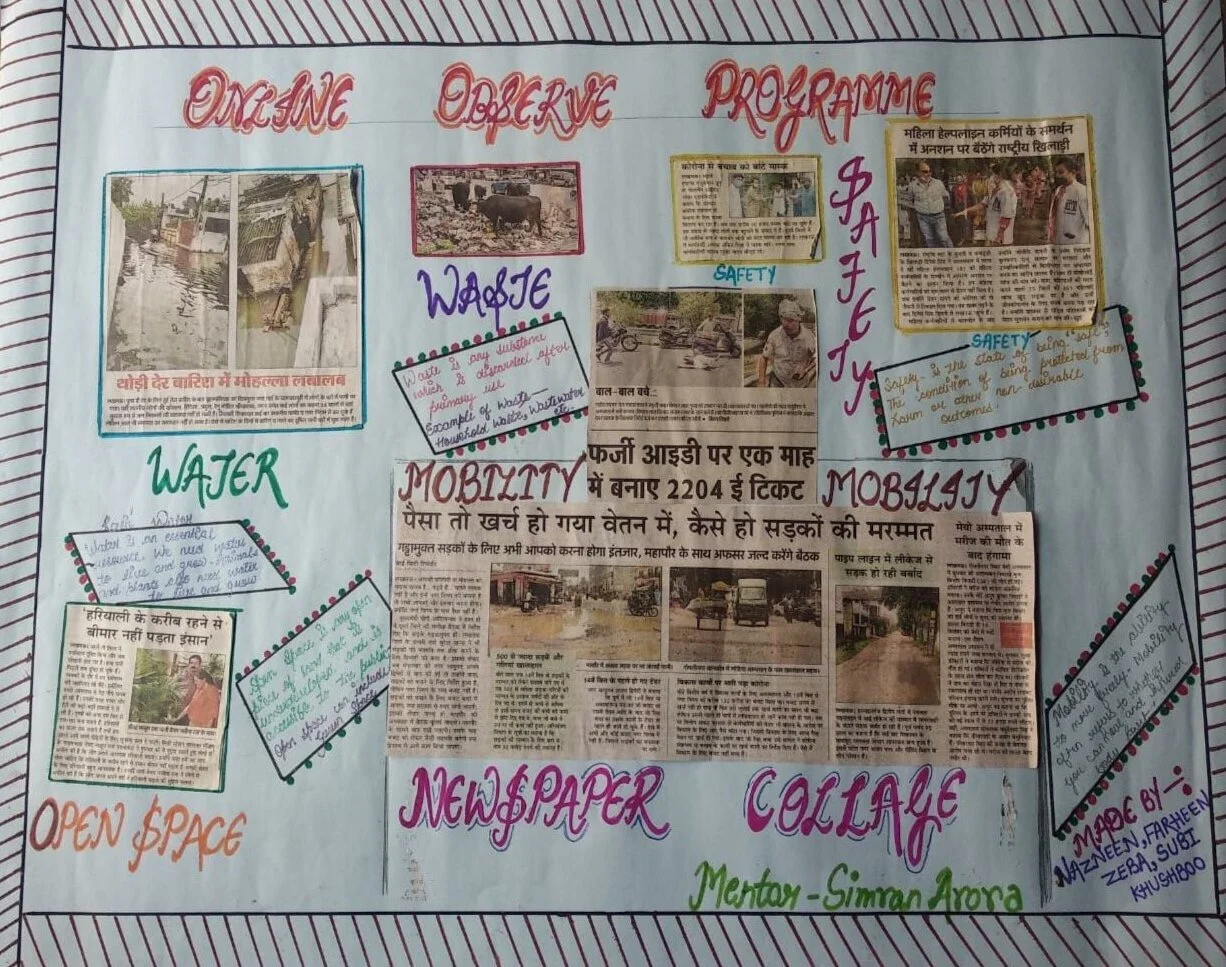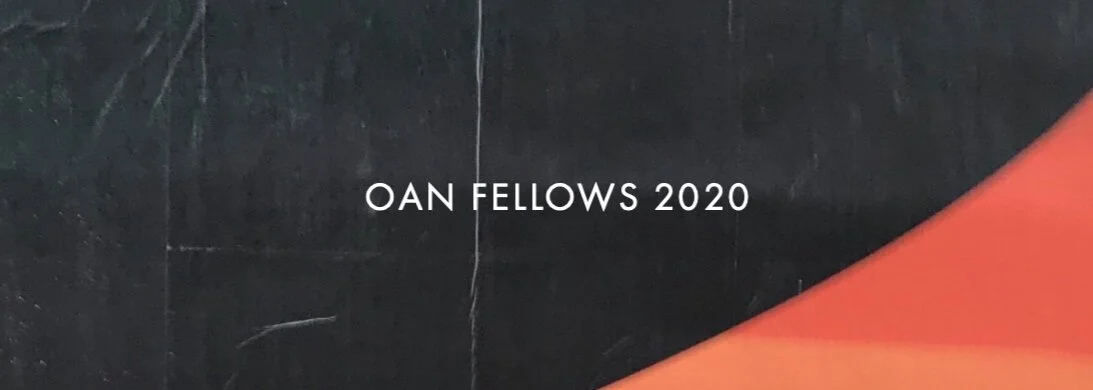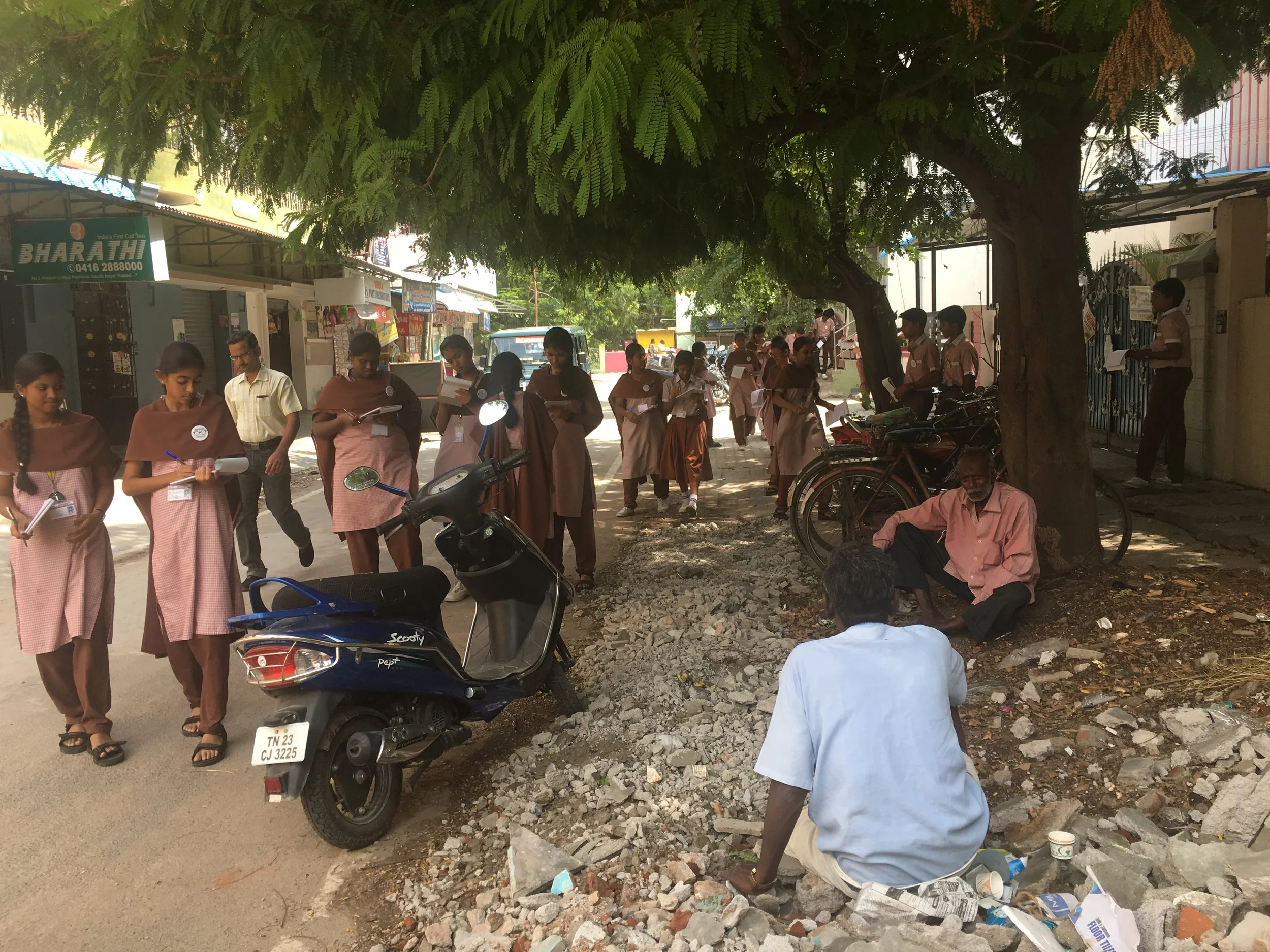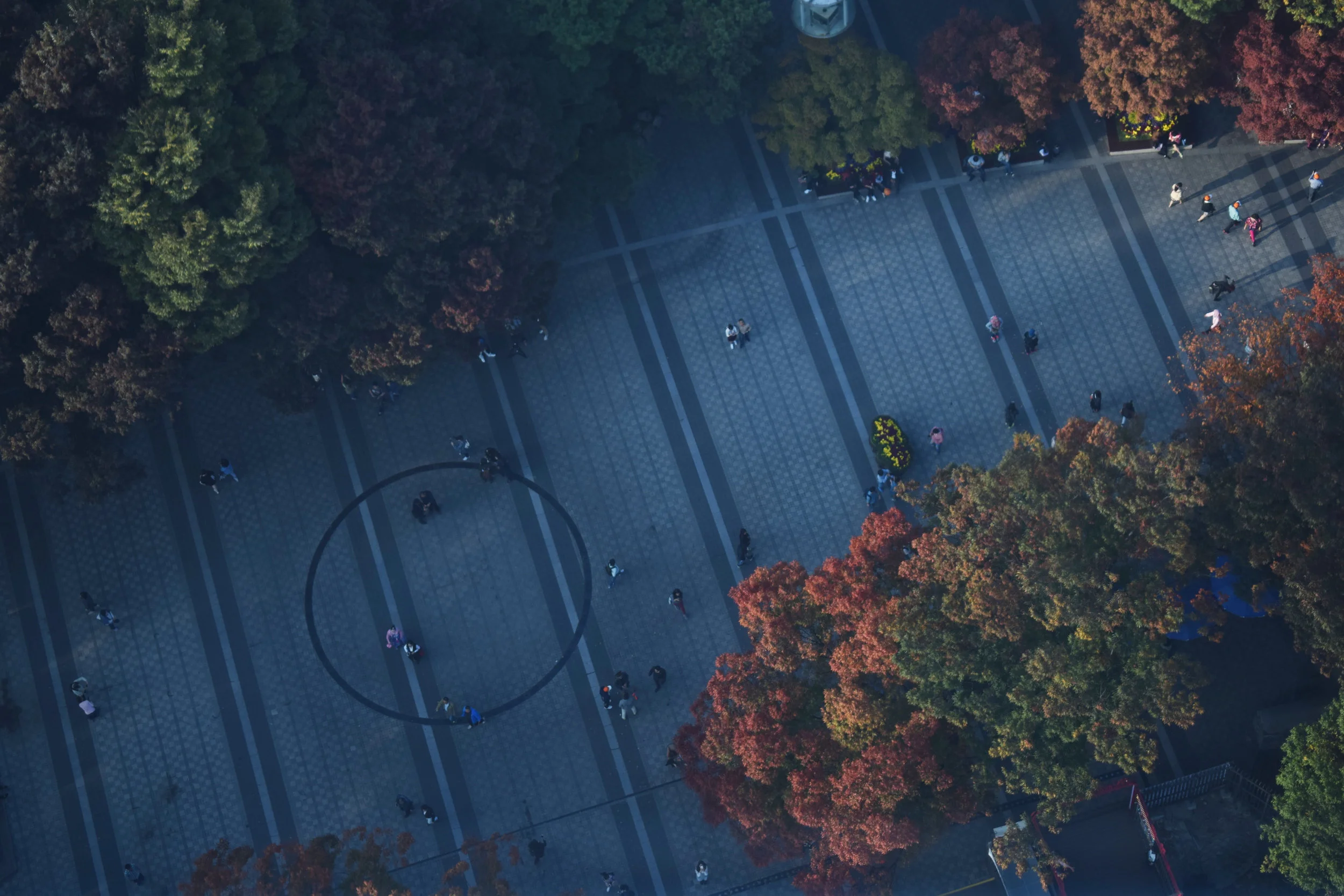


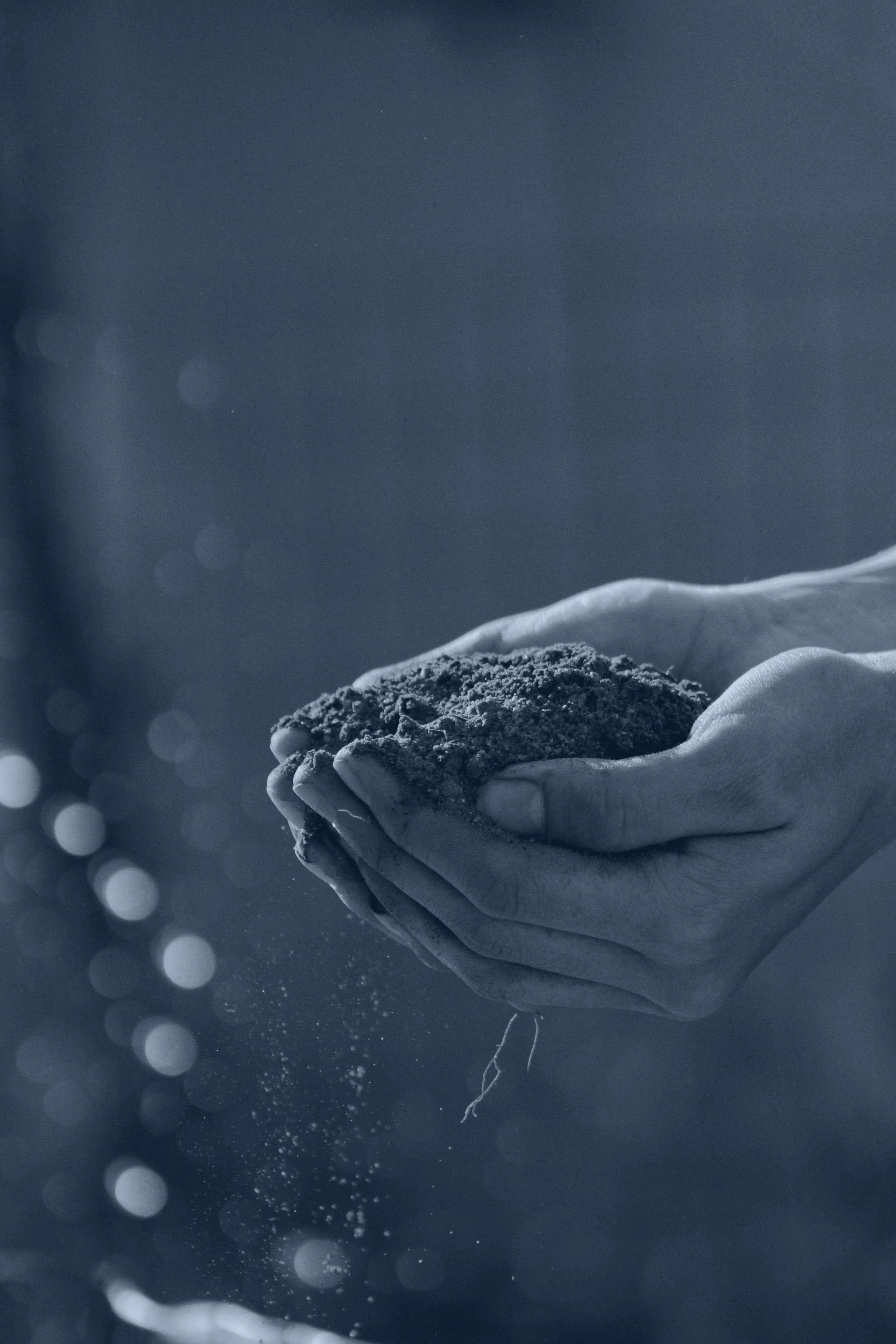




Who We Are
Who We Are
INTRODUCTION
Launched by a group of activists, practitioners, and academics in 2005, the Center for the Living City holds the singular distinction of being the only urbanist organization founded in collaboration with Jane Jacobs.
Widely considered the foremost urbanist of all time, Jane Jacobs wrote:
“Cities have the capability of providing something for everybody, only because, and only when, they are created by everybody.” [The Death and Life of Great American Cities]
In the years since its founding, the Center has become a leading global urbanist organization. Advancing social, environmental and economic justice forms the core of its purpose. The Center works to invite all perspectives, particularly those of the marginalized, to participate in the creation of solutions that are empathic, responsive, and community-based.
Support for the Center’s programs has been provided by the Ford Foundation, Rockefeller Foundation, Rockefeller Brothers Fund, and Knight Foundation, among others.
VISION
Cities that are vibrant, adaptive, equitable communities created by and for everyone.
MISSION
Inspire civic engagement and leadership; invite creative urban solutions; expand understanding of the ecology of cities.
PURPOSE
Advance social, environmental, and economic justice as global urbanization accelerates.
CORE VALUES
Integrity
We commit to transparency, responsibility, good stewardship.
Inclusivity
We value all the people of this world.
Empathy
We believe that empathy is a primary informant of design excellence.
Creativity
The broad exploration of possibilities is at the heart of our work.
Tenacity
We believe that the impediment itself can guide the way forward.

What We Do
What We Do
program PRIORITIES
We develop programs that:
‣ Broaden civic engagement and cultivate leadership with increased concentration on marginalized populations (equitable engagement)
‣ Encourage and assist collective inquiry and utilization of community-based participatory planning
‣ Invite problem-solving through innovation and community-generated creative responses
‣ Elevate position and perspective of women and girls in all initiatives
‣ Advance as a conceptual and strategic framework the “ecology of cities” (integration of social, environmental and economic systems in addressing urban challenges)
‣ Advocate progress from conventional best practices to a collective vision of best possibilities.

How We Operate
How We Operate
OUR approach
In pursuit of our Mission and the full use of resources, we:
Foster an organizational culture that is flexible, adaptive, experimental
Utilize the talent of individuals selected as Jane Jacobs Fellows to develop and operate certain programs
Forge strategic partnerships to share the program development, operational and administrative capacities of other organizations
Maintain a lean staff through the combined strength of strategic partners, Jane Jacobs Fellows and members of the Governing and Advisory Boards.

The Human Face
The Human Face
why it matters
observe program
Helping young people around the world understand how cities really work – the dynamics beneath the surface and the opportunities to effect change—is what the Observe Program is all about. Participants show others in their community what they’ve observed, noting things that they like, things that they want preserved, their concerns for the area, and ideas to make it better. Over 400 young people in both the U.S. and internationally have already participated in Observe.
Hibba, Girl Scout, part of the Observe Program
As a tenacious eighth-grader, this Girl Scout quickly emerged as a leader not only within her troop but also within the program. Her guidance, curiosity, and passion for social justice have catalyzed the effort to strengthen girls’ and young women’s voices. Hibba began the program as an 11-year-old Girl Scout in the first troop to pilot Observe! A year later, she took Observe! to Pakistan and is working with 10 local girls and a Girl Guide council there on the program. Her perspective and energy have helped shape Observe’s future.
Helena (not her real name), part of the Observe Program
Helena is quiet but perceptive. She is often the one in the corner observing her peers and choosing not to offer up her every thought. When asked about what she might like to celebrate or transform in her community, she thought for a long moment, took a deep breath, then spoke up in front of her peers, which is something she does not often do. She said that sometimes those around her are not in a good mood or very positive. To remedy this, Helena proposed creating a wall of kindness with reminders to be grateful and kind to each other. She was inspired by artist Candy Chang’s “Before I Die” wall, but adapted it to address her observations in her community
José (not his real name), a high school freshman and part of the Observe Program
José has big ideas but they don’t always translate to his grades. But given the opportunity engage in his community and take ownership of the places he loves, he felt confident enough to share his ideas with his peers and the community. Observe provided the opportunity for José to learn and engage in a way that was more conducive to his learning style.
José’s concerns and ideas are now being taken into consideration by the local city government. He noticed that the main thoroughfare to get to school or the bus stop had recently become more uncomfortable because of the homelessness crisis in the city. José suggested building a paved pathway for young people walking to or from school so they don’t have to walk through the mud or snow; he also suggested there be lighting along the pathway so they can see what’s going on around them and feel safe. The senior advisor on education in the Mayor’s office and a former council member participated in the local Jane Jacobs Walk –which is part of the Observe Program -- and suggested José apply for a community improvement grant to bring his ideas to fruition.
It turns out the city is already in the process of renovating the park where José made his observations, but they had not considered that it was a main thoroughfare for students getting to and from school. The city incorporated José’s suggestion into their master plan. José is currently in the process of writing a letter of support on behalf of himself and his peers for the proposed park master plan.
CITY JOURNALISM WORKSHOP: TELLING VITAL STORIES
To further the understanding and complexity of urban life, the Center has created a new program, funded by the Ford Foundation, to strengthen the vocabulary, knowledge and skills of journalists who write about cities. The City Journalism Workshop addresses a need in journalism and gives citizens and policymakers the knowledge to accurately report on the ways people can preserve and transform their communities.
Rachel Jones, part of the 2017 Journalist Workshop
"The Center for the Living City Journalism Workshop changed the way I look at neighborhoods and urban progress. I'll never be able to see a new housing development again without wondering who'll be able to afford to live there, or who might have been displaced. I have a much stronger grasp of how urban policies can help or hinder progress for entire regions."
Rachel Jones is an international media consultant and former reporter for the St. Petersburg (Fla.) Times, the Detroit Free Press, and National Public Radio
“The workshop changed the way I look at neighborhoods and urban progress. I'll never be able to see a new housing development again without wondering who'll be able to afford to live there, or who might have been displaced. I have a much stronger grasp of how urban policies can help or hinder progress for entire regions. ”
– Rachel Jones

Our Future
Our Future
THE VALUE OF WHAT WE DO
We have begun the long-term process both to expand our current programs and develop new programs that address our Vision, Mission and Purpose.
These in-development programs include creating new Jane Jacobs Fellowships that explore challenges of:
‣ gentrification
‣ democracy and the privatization of public space
‣ access of immigrants and refugee families to long-term housing and business formation opportunities
‣ democracy and social justice issues of mobility and public space
‣ social justice in access to clean air and water
‣ daylighting opportunities for buried urban waterways
‣ complex social, environmental and economic problems of urban lighting
‣ housing people in cities
‣ unintended consequences of autonomous vehicles

Collaborations
Collaborations
selected ngo collaborators
‣ Consortium for Dark Sky Studies (University of Utah)
‣ International Dark-Sky Association
‣ Loeb Fellowship Program (Harvard Graduate School of Design)
selected Professional collaborators
Western States
‣ Carl Anthony [Founder, Breakthrough Communities; affiliations with University of California, Berkeley; Stanford University; Harvard University (Institute of Politics)]
‣ Teddy Cruz (Professor, Public Culture and Urbanization, Dept. of Visual Arts, University of California, San Diego)
‣ Richard Furnau (Architecture, University of California, Berkeley)
‣ Laura Hartman (Architecture, University of California, Berkeley)
‣ Allan Jacobs (City & Regional Planning, University of California, Berkeley)
‣ Elizabeth Macdonald (City & Regional Planning, University of California, Berkeley)
‣ Liz Ogbu (Studio O, faculty University of California Berkeley, Stanford University)
‣ Stephanie Pincetl (Institute of the Environment and Sustainability, UCLA)
‣ University of Utah (College of Architecture + Planning)
Eastern States
‣ Marywood University (School of Architecture)
‣ Clemson University (School of Architecture)
‣ Parsons School of Design (The New School)
‣ Pratt Institute (School of Architecture)
‣ Purchase College (State University of New York)
‣ University of North Carolina, Charlotte
‣ University of Virginia School of Architecture
‣ University of Texas at Austin School of Architecture
‣ Hunter College (CUNY)
International
‣ Technical University - Delft, The Netherlands
‣ Dessau Institute of Architecture - Dessau, Germany
‣ Technical University of Architecture and Planning - Vienna, Austria
‣ EiABC, Ethiopian Institute of Architecture, Building Construction and City Development - Addis Ababa, Ethiopia







